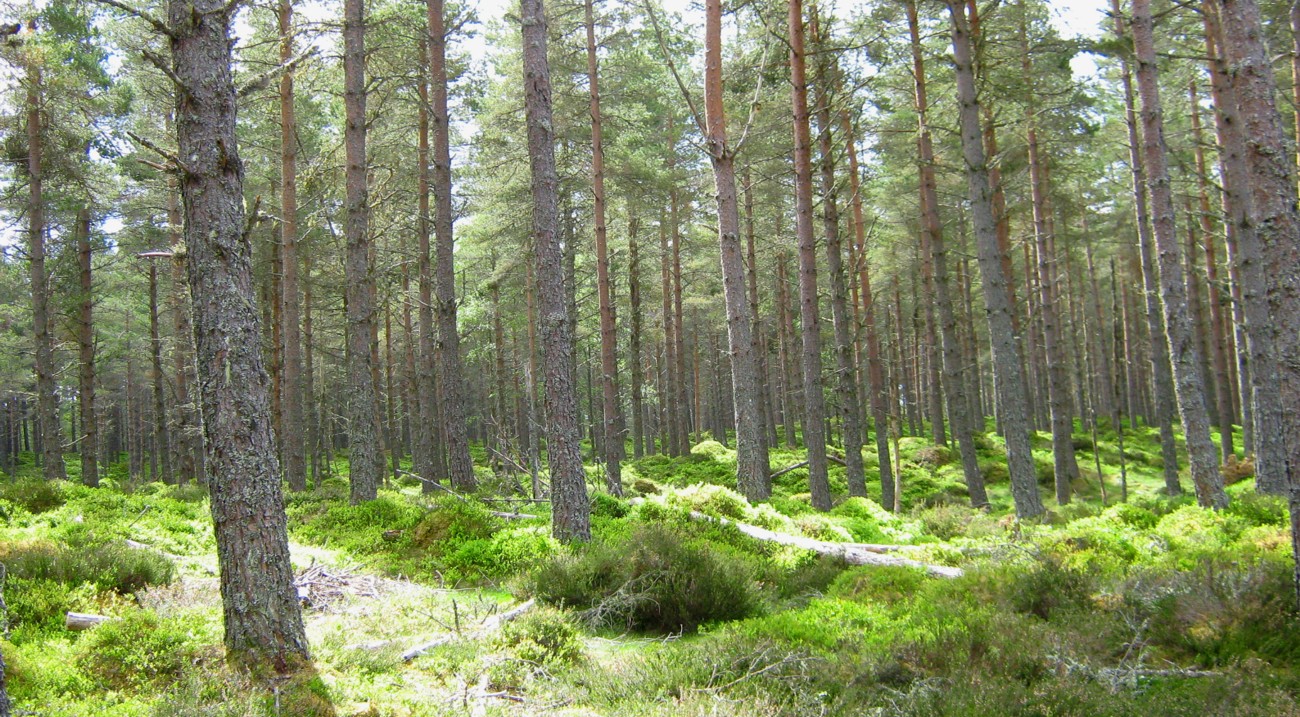
Standing tall on the horizon, trees are the timeless guardians of our farming landscapes. In hedgerows and copses, or battling the elements on exposed hillsides, they're valued for supporting wildlife an biodiversity; but this week the Woodland Trust is asking farmers and landowners to think about "treeconomics", - can trees bring a profit?
At this weeks's Farm Business Innovation 2015, the Trust's John Tucker is asking are trees and woods a farmer's friend or foe?
Why foe? Because says John, in the wrong place, or badly managed, woods can create more work. "Rabbits and squirrels can damage young planting, but if you do your homework, these sort of issue scan be tackled. Tree roots can interfere with field drains, though not if you look at the right species in the right place".
But well managed, trees and woods can not only be the farmer's friend, but help increase income.
And John knows what he's talking about, he's a Chartered forester, with 30 years forestry and arboricultural experience. As Director of Woodland Creation at the Woodland Trust he's working with farmers to maximise their returns from trees and woods. He said:
"At a time when many farm incomes are squeezed, using all the assets on a farm is important. And woods and trees are part of those assets too. From timber to truffles, it's all about finding the right fit for your enterprise.
We don't have much woodland in England, around 13% cover, and we don't manage much of what we do have. Most farms will have some trees and woods. But around 47 % of all woodland in England is currently unmanaged and that's a wasted opportunity".
This weeks he's introducing his audience to different ways to diversify, including capitalising on timber and wood fuel; and creating shade and shelter belts for livestock. Agroforestry can bring a second crop, and encouraging pollinators can increase yields. For arable farmers, trees can help decrease soil erosion.
His expertise is backed up by examples of farmers who've supported the Woodland Trust and worked with them. John said:" We are building up strong evidence, not just about the advantages of tree planting for wildlife on farms, but also about the positive commercial benefits, and we are always looking for new farmers to work with."
The Trust can advise, and in some cases help source funding towards the cost of planting.
Farming examples
Shropshire: Organic farmer Tim Downes has a dairy, beef and arable farm. He has numerous in-field trees and hedge row trees on the farm, along with small areas of woodland. He's planted along water courses to stop nutrient loss due to run off, planting has also helped stabilise river banks. Tree shelter has helped create more nutritious pasture by retaining moisture; and has improved crop water efficiency. He's also been working with the Woodland Trust on planting an area on the farm for animals to browse foliage with a view to improving stock health.
Cumbria: David Brass from The Lakes Free Range Egg Company, planted trees to create shaded areas for his hens, which are naturally woodland birds. "The cost benefit of tree planting is one of the best in farming. It costs us about £2,000 per hectare to plant trees, but this immediately improved the proportion of Grade A eggs produced by at least 2%, meaning that we achieve payback in just six months".
Cumbria: Tim Nicholson continues the family legacy of planting trees which supply firewood and chips for farm heating systems. He's also planted sweet chestnut for fencing, gateposts and other farm necessities.
Cambridgeshire: Stephen Briggs, an arable farmer, planted fruit trees at field boundaries to help stop soil erosion. Not only have they helped bind the soil, he now harvests apples as well as cereals from the same land. The farm is now producing more income for greater periods of the year.
Devon: Mike Rodgers has incorporated productive hedgerows into his farm business plan. Not only do they produce a wild harvest, but through coppicing and trimming he sells logs for wood burners. He's also demonstrated the benefits of agroforestry creating a small scale forest garden in a three acre field, and using tree boundaries has cropped lentils, soya beans and quinoa.
Northern Ireland: Alan Hunter, - wood fuels and kindling. He converted unproductive land on an old clay works to plant poplars, and started a new business.
Kent: John Leigh Pemberton makes and exports chestnut palings, by managing woodland on the Torry Hill Estate through coppicing. Chestnut is full of natural tannins and lasts a long time in the ground. It is also used in conservation work, such as stabilising dune systems.
North Yorks Moors: Mike Weighell has take poor land out of arable production and planted shelter belts. These protect livestock and produce wood fuel.
